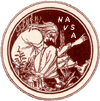Call for Articles: Edited Collection "Urban Monstrosities"
Joseph Lamperez and J. Alexandra McGhee, University of Rochester
The contemporary city bears the trace of at least two seismic developments: the Enlightenment rationalization of urban space, marked by the twinned banishment of death to the urban periphery and the creation of a regime of spatial surveillance; and the emergence of the modern city as simulacrum, its widened boulevards and glossy surfaces allowing for the continual flow of commodities and capital. How do contemporary authors of speculative fiction figure and respond to these and other major urban transformations in their own work? We are seeking articles that explore the city as a space of monstrous potential, and which examine how the uncanny cityscape has (d)evolved since the Industrial Revolution. SF and weird fiction, for example, often depict the city as a living organism that is alternately transformative and malicious. How do these and other literary and artistic modes figure urban space as a site of bizarre experiences and subjectivities? What entity can be read in, and attempts to speak through, the oneiric facades of the architectural fantasia? What are the ramifications of a sentient city? How useful are Blake's “dark Satanic Mills," Dickens's "Animate London," and Eliot's "unreal" cities as models for reading contemporary instances of urban monstrosity?
This collection attempts to posit the neglected but important link between the nineteenth and early twentieth century city as an unreal spectacle of overwhelming crowds, urban wilderness, and new social formations, and contemporary representations of the city as an incipient organism or fantastic bestiary, its space a site of chthonic splendor and ruinous allure. What new readings become possible when sophisticated modern fantasists like China Mieville and Jeff VanderMeer are placed in a tradition of urban representation stretching back to Wordsworth and Blake, Baudelaire and Poe? How can Mayhew's explorations or Benjamin's body of work on the flâneur and the urban phantasmagoria offer new ways of theorizing the global renaissance of street art, or the burgeoning documentation and aestheticization of derelict architectural structures known as "ruin porn"? Are areas of potential insurrection within the city—Bhabha’s “third space,” the urban carnivalesque—inimical to, or in league with urban monstrosity?
Please send a 500-word abstract, tentative title and brief (1-2 pp) CV to Joseph Lamperez atjosephlamperez@gmail.com and J. Alexandra McGhee at alimcghee@gmail.com by October 1, 2011. Completed articles will be due April 1, 2012, and should be between 3500-5000 words. For queries please contact Joseph Lamperez and J. Alexandra McGhee at the email addresses above.
Joseph Lamperez and J. Alexandra McGhee, University of Rochester
The contemporary city bears the trace of at least two seismic developments: the Enlightenment rationalization of urban space, marked by the twinned banishment of death to the urban periphery and the creation of a regime of spatial surveillance; and the emergence of the modern city as simulacrum, its widened boulevards and glossy surfaces allowing for the continual flow of commodities and capital. How do contemporary authors of speculative fiction figure and respond to these and other major urban transformations in their own work? We are seeking articles that explore the city as a space of monstrous potential, and which examine how the uncanny cityscape has (d)evolved since the Industrial Revolution. SF and weird fiction, for example, often depict the city as a living organism that is alternately transformative and malicious. How do these and other literary and artistic modes figure urban space as a site of bizarre experiences and subjectivities? What entity can be read in, and attempts to speak through, the oneiric facades of the architectural fantasia? What are the ramifications of a sentient city? How useful are Blake's “dark Satanic Mills," Dickens's "Animate London," and Eliot's "unreal" cities as models for reading contemporary instances of urban monstrosity?
This collection attempts to posit the neglected but important link between the nineteenth and early twentieth century city as an unreal spectacle of overwhelming crowds, urban wilderness, and new social formations, and contemporary representations of the city as an incipient organism or fantastic bestiary, its space a site of chthonic splendor and ruinous allure. What new readings become possible when sophisticated modern fantasists like China Mieville and Jeff VanderMeer are placed in a tradition of urban representation stretching back to Wordsworth and Blake, Baudelaire and Poe? How can Mayhew's explorations or Benjamin's body of work on the flâneur and the urban phantasmagoria offer new ways of theorizing the global renaissance of street art, or the burgeoning documentation and aestheticization of derelict architectural structures known as "ruin porn"? Are areas of potential insurrection within the city—Bhabha’s “third space,” the urban carnivalesque—inimical to, or in league with urban monstrosity?
Please send a 500-word abstract, tentative title and brief (1-2 pp) CV to Joseph Lamperez atjosephlamperez@gmail.com and J. Alexandra McGhee at alimcghee@gmail.com by October 1, 2011. Completed articles will be due April 1, 2012, and should be between 3500-5000 words. For queries please contact Joseph Lamperez and J. Alexandra McGhee at the email addresses above.



